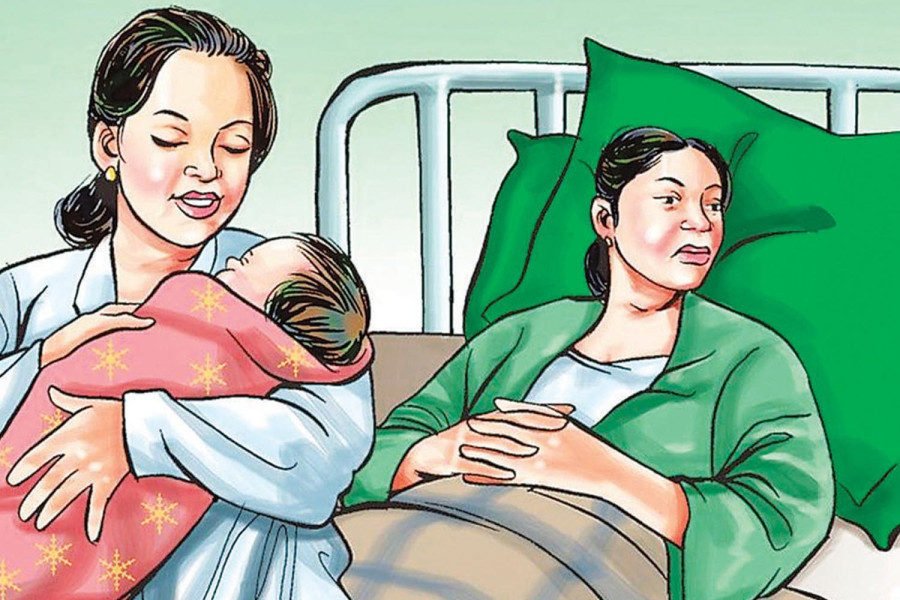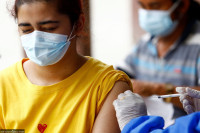Health
Institutional delivery rate declines sharply
190 maternal and 1,907 perinatal deaths recorded in fiscal 2023-24. The drop in institutional delivery rate might be similar to a drop in fertility rate, officials say.
Post Report
Institutional delivery rate in Nepal declined to 74 percent in the fiscal year 2023-24, a sharp decrease from 80 percent in the previous fiscal year.
Data from the Integrated Health Information Management System under the Department of Health Services, which monitors institutional deliveries nationwide, indicates a serious setback to previous gains.
“Yes, only about 74 percent of the deliveries were conducted by skilled birth attendants and skilled health providers in the fiscal year 2023-24 [2080/81 Nepali fiscal year],” said Nisha Joshi, a public health officer. “This data indicates an urgent need to address underlying issues.”
Institutional delivery and delivery by skilled birth attendants or skilled health professionals is the country’s priority programme, which is credited with curbing the maternal and child mortality rates.
Nepal has reduced maternal deaths by over 70 percent since 2000, according to a new report by the World Health Organisation.
The UN health body, in its recent report, stated that currently 142 Nepali women die from maternity-related complications per 100,0000 live births.
A previous study, carried out by the National Statistics Office in 2021, showed 151 maternal deaths per 100,000 live births.
Similarly, neonatal mortality now stands at 16.6 per 1,000 live births, and the stillbirth rate has decreased to 13.5 per 1,000 births, according to the UN health body.
The Nepal Demographic and Health Survey-2022, carried out by the Ministry of Health and Population, showed that 21 neonates die per 1,000 live births.
Health officials say that even if the institutional delivery rate has declined alarmingly, that doesn't mean the home delivery rate has increased.
“The decline in the overall fertility rate could be the reason for the decline in the institutional delivery rate,” said Joshi. “Percentage of the institutional delivery has been derived from attributed total pregnancies.”
The Total Fertility Rate (TFR) had declined to 1.94 in 2021 and is estimated to be 1.76 in 2025.
Health officials say hospitals providing maternity services nationwide report declining delivery rates.
The report shows there were 190 maternal deaths and 1,907 perinatal deaths in the fiscal year 2023-24, with notable provincial variations. Perinatal deaths are deaths of babies between 22 weeks of gestation and before the first seven days of life.
With the government announcing free institutional delivery service in 2009 at all state-run health facilities, more than 2,800 birthing centres have opened across the country. The institutional delivery rate, which was around 18 percent then, has increased to around 80 percent.
Various programmes, including free institutional delivery and travel allowances for those opting for institutional delivery and antenatal visits, have been initiated to reduce maternal mortality. The health ministry imparted skilled birth attendant (SBA) training to staff nurses and hired them at birthing centres to prevent possible deaths during or after child delivery.
It has also distributed misoprostol, a medication used to treat postpartum bleeding in new mothers, through female community health volunteers.
Nepal had reduced the maternal mortality rate from 539 per 100,000 births in 1996 to 239 per 100,000 births in 2016—for which the country even received a Millennium Development Goals award.
Nepal’s target under the UN’s Sustainable Development Goals is to reduce the maternal mortality rate to 75 per 100,000 births by 2030.




 13.12°C Kathmandu
13.12°C Kathmandu













